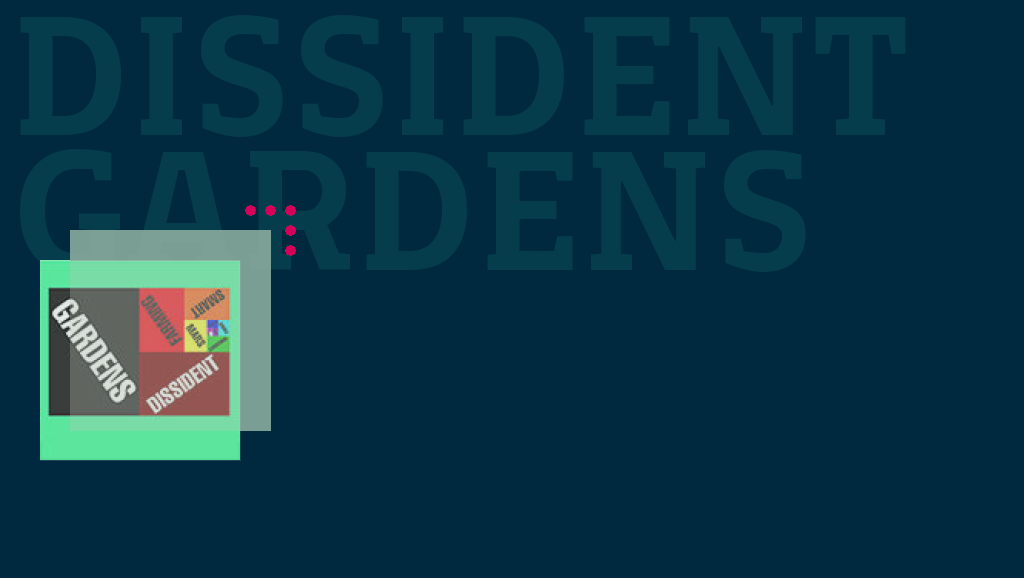Het Nieuwe Instituut in Rotterdam is currently hosting an exhibition entitled Dissident Gardens. The exhibition contains multiple installations and events that focus on the struggle between nature and culture, all of which can be experienced until 23 September 2018. More information is available here.
The exhibition drew our attention not only because of its relationship to the authors’ interests in food production and its relationship to responsibility and innovation, but also because one of the exhibition spaces is curated by Maurizio Montalti of Officina Corpuscoli. Readers will know Montalti from several previous posts, including a review of his Fungal Futures exhibition, the fourth Osmosi meeting in 2015 and the earlier interview conducted for the Foundation by Margherita Fronte.
Montalti’s contribution in Rotterdam is an installation called Biotopia. The installation contains various objects produced from natural fungus-based materials and a display of the technology and techniques used to produce these materials. One example of a possible industrial use for this material is shown through a display of insulation tiles, both fixed to a wall but also loose so that they can be handled. Other objects include shaped forms that could be used as holders or lamp shades.
As always Montalti shows a varitety of possible uses for natural materials that may be able to substitute plastics or other chemical-based solutions, a goal that very much underpins his scientific research and artistic work, illustrating the designer’s role as innovator, artist and maker while investigating the relationships between nature and society.
Alongside Montalti’s work the ground floor gallery offers an interesting collection of plans and models that describe how gardens have been recreationally designed in the Netherlands to offer holiday retreats for an ever growing and ever more urbanized population. In this installation under the title Pleasure Parks, photos show the development of the nature park holiday resort concept and narrate the history of such tourism and its effect on the countryside. The domestication of rural landscape and its integration into urban society provides a nice link to the following installations.
The final two installations in this gallery are quite related, in that they offer representations of modern and in fact future farming techniques and sit so well together that their interrelatedness makes than difficult to separate.
Gardening Mars is a projection-based installation that allows the visitor to imagine how Earth culture might look if transplanted onto Mars and to design living space on a virtual Martian landscape. Alongside this installation the visitor is treated to an example container based farming methods, offering the visitor the chance to see how plants could be grown in a fully contained environment (for example on a planet with a different atmosphere). The containers sit alongside a mock-up Martian landscape, lightheartedly signposted (see the photos below) but non-the-less demonstrating how farming could take place within such an environment, using current methods that seem space age today, with high fluorescent lighting and clinical separation of plant life in trays on stainless steel tables.
The final offering within this gallery is a short film that also sits under the title Smart Farming.
Machine Dream is a short film made by artist Dirk Vis (http://www.dirkvis.net/), in which the visitor is treated to a tour of a high technology food production system. Tractors drive themselves across vast fields, sensors measure humidity and soil composition, robot hands pick fruit, squeezing it first to see if it is ripe. A robot or mechanical dream it may be for some, a nightmare for others, but the production capability of such a system is difficult to believe.
The second gallery offers an installation called The Human Insect: Antenna Architectures 1887 – 2017. This exhibition includes a fine insect collection focused on their antennae, mirroring these communication tools with human antenna construction through time, from the first aerial used for radio transmissiom to the giant structures found atop high buildings today.
The Nieuw Instituut building is in itself an interesting place to pass an hour or two. The ceiling upstairs by the cloakrooms contains an installation of packets of seeds, labeled with concepts and uses related to the plants that would grow if they were planted. The foyer holds a flower display of typical Dutch horticulture, with an explanation of the flowers on show and how they are produced, while sitting within the Museum Park the entire building finds place in a green and information (and art) filled garden.
We would certainly recommend a visit if you are passing through this part of Europe.
Photos by Cristina Grasseni:
————-
















